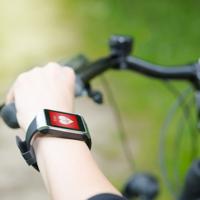As we look to the future of fashion, one area that sparks excitement is wearable technology. Wearable tech in fashion is evolving from fitness trackers and smartwatches to more integrated and innovative options, such as smart clothing.
A Seamless Blend of Tech and Style
Smart clothing, also known as e-textiles or electronic textiles, represents a promising frontier where technology and fashion meet. These garments incorporate devices and circuits woven right into the fabrics, offering a seamless integration that wasn’t possible before. Imagine clothing that can monitor your health, adjust to temperature changes, or even interact with smart home devices.
Health Monitoring
Smart clothing Smart Clothing has great potential in health monitoring. For example, Hexoskin and OMsignal have developed smart shirts that track body metrics like heart rate, breathing, and activity levels. These shirts provide data that can be critical for athletes or individuals with health concerns, offering insights without the bulk of traditional monitoring equipment.
Self-Adjusting Garments
Clothing that adapts to the environment is another fascinating development. Companies like Ministry of Supply and Google have explored fabrics that alter their properties based on temperature. Think of jackets that provide added insulation when it gets cold, or clothes that become breathable in warmer conditions. This is closely related to the development of heating and cooling clothes.
Fashion as Expression
Wearable tech in fashion is not just practical; it’s also expressive. The evolution of e-textiles could lead to dynamic patterns or color changes in your attire. Designers like CuteCircuit have already created garments capable of displaying customized messages or lights, turning our clothes into interactive displays.
Examples and Emerging Technologies
Beyond fashion houses, tech giants are showing interest in smart clothing. Google’s Project Jacquard explores conductive fibers that transform garments into interactive surfaces. The Levi’s Commuter Trucker Jacket, created in collaboration with Google, allows wearers to control their smartphone via gesture commands on the jacket’s sleeve.
Research from institutions like MIT and Kansas State University aims to push these boundaries further. They’re exploring piezoelectric fabrics that generate energy as you move, potentially powering small devices. As research progresses, these innovations could become more mainstream.
Challenges and Considerations
While the prospects are exciting, there are challenges to consider. Integrating technology into clothing raises questions about durability and washability. Ensuring that smart fabrics withstand everyday wear and tear, while maintaining functionality, is crucial for widespread adoption.
Privacy and data security also remain points of concern. Smart clothing that collects personal data must safeguard that information to protect users.
Conclusion
The future of wearable tech in fashion holds tremendous potential, blending functionality with expression. While it’s exciting to envision a world where our clothes are extensions of the digital world, ongoing research and innovation will be key in addressing challenges.
Smart clothing promises a future where our fashion does more than just serve as a social statement—it becomes a dynamic part of our lifestyle. As this field grows, it’ll be interesting to see how wearable tech reshapes not just how we dress, but how we live.




